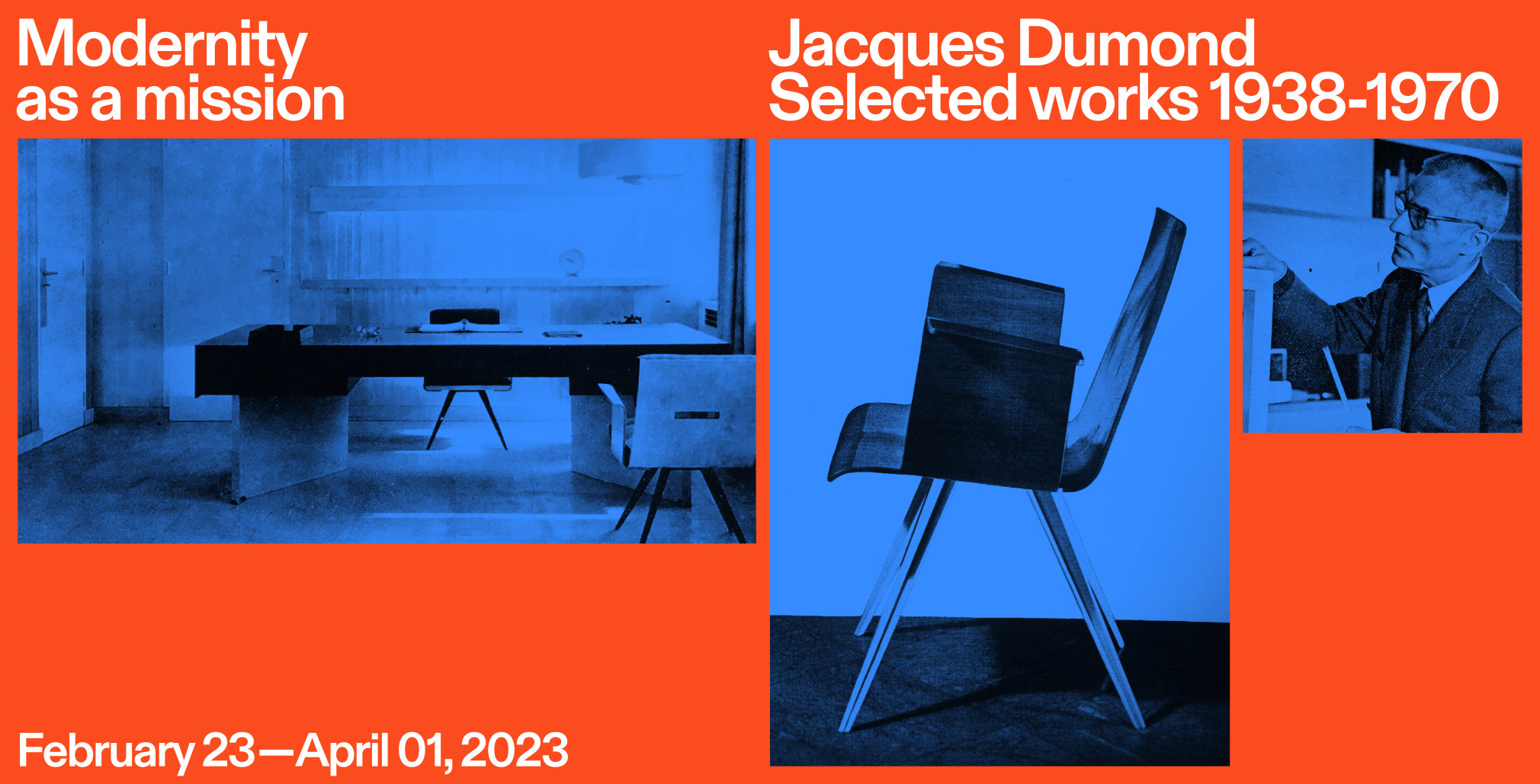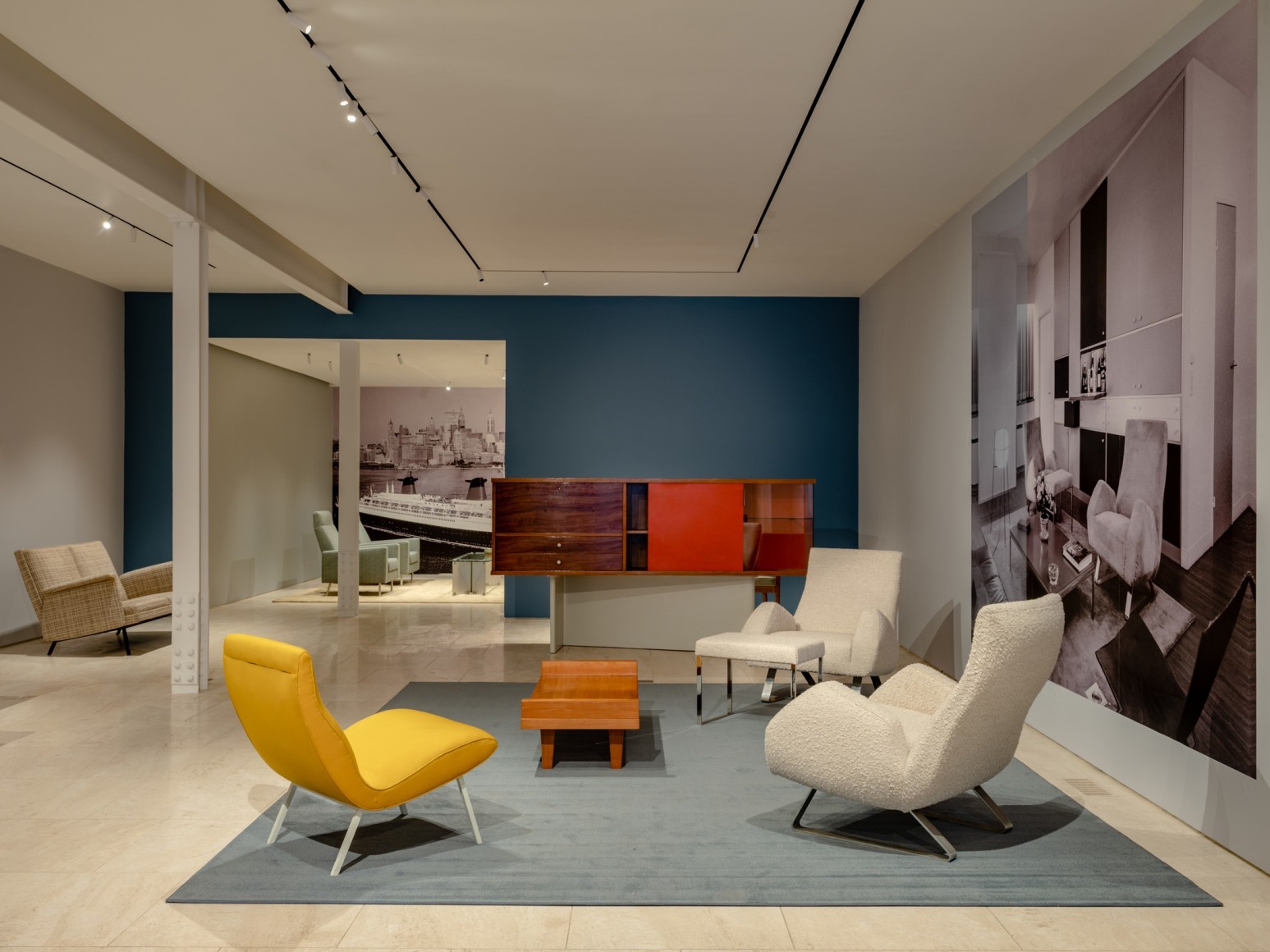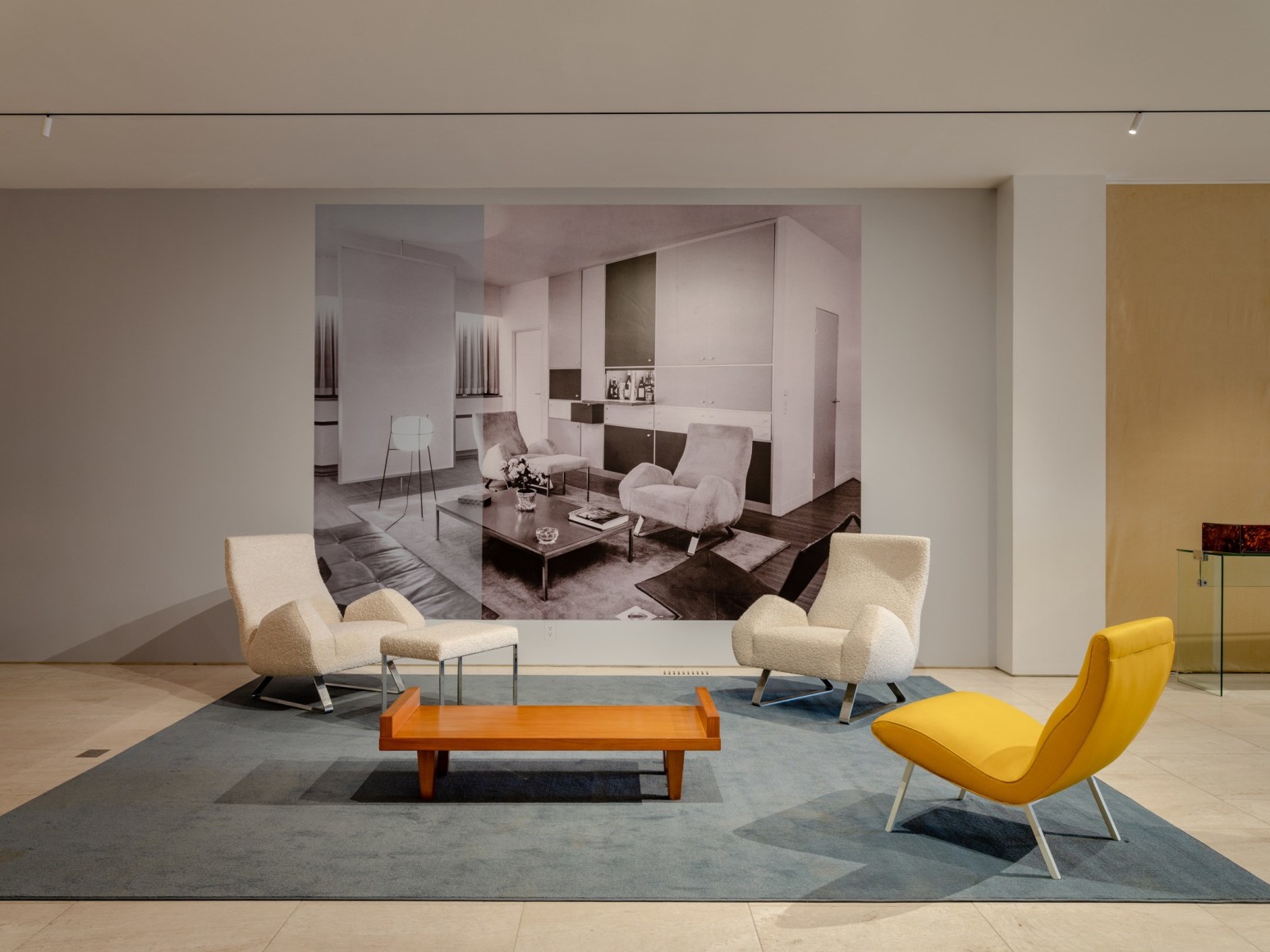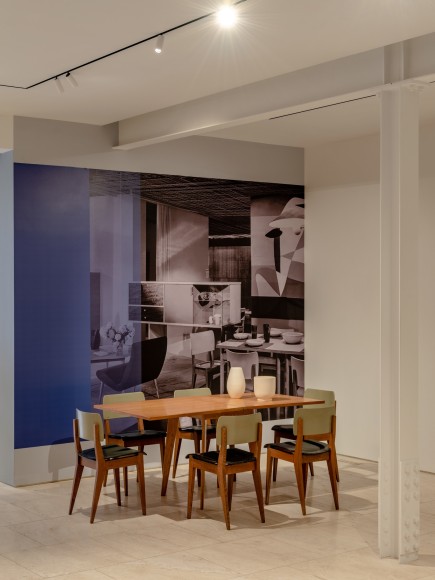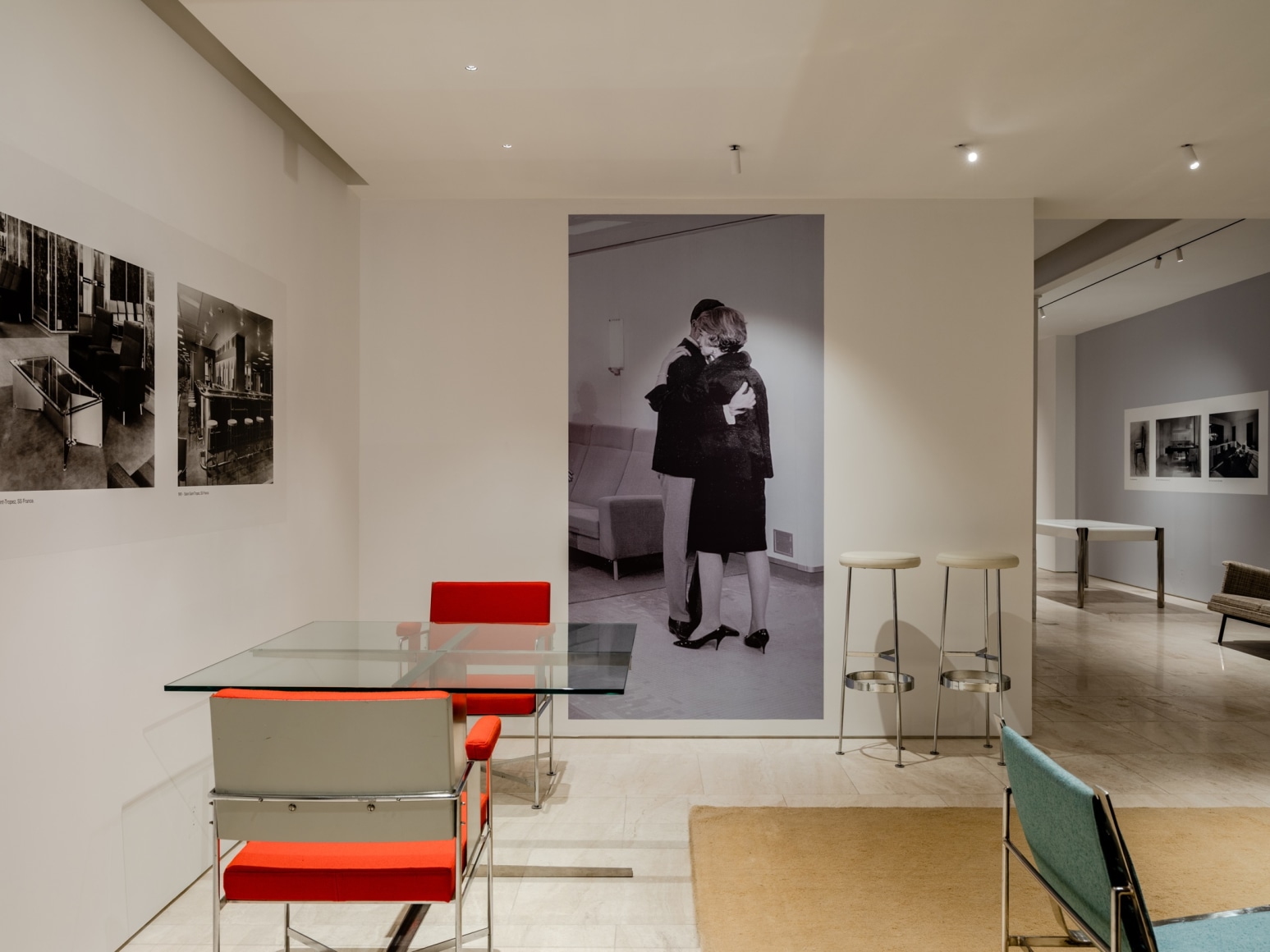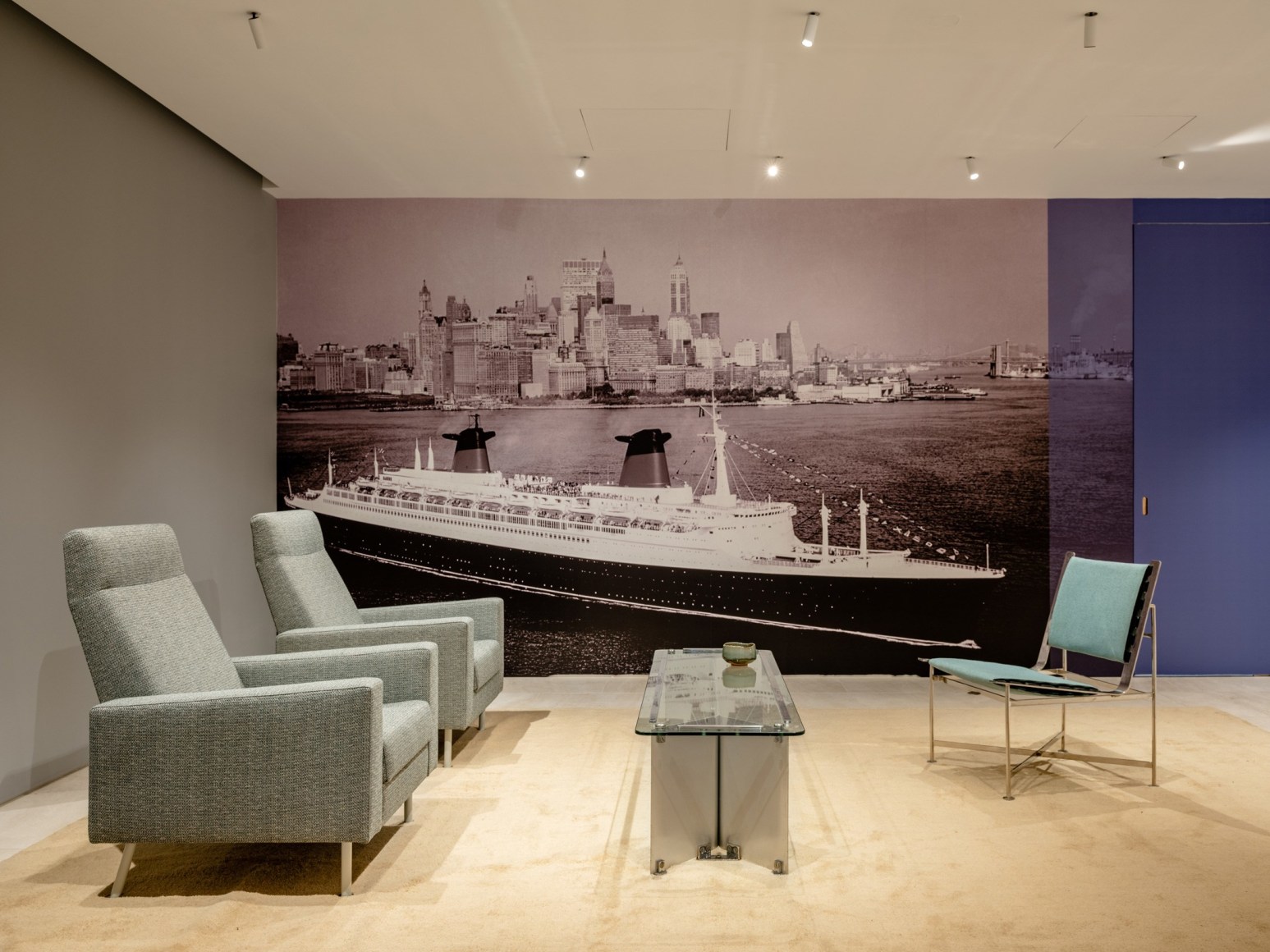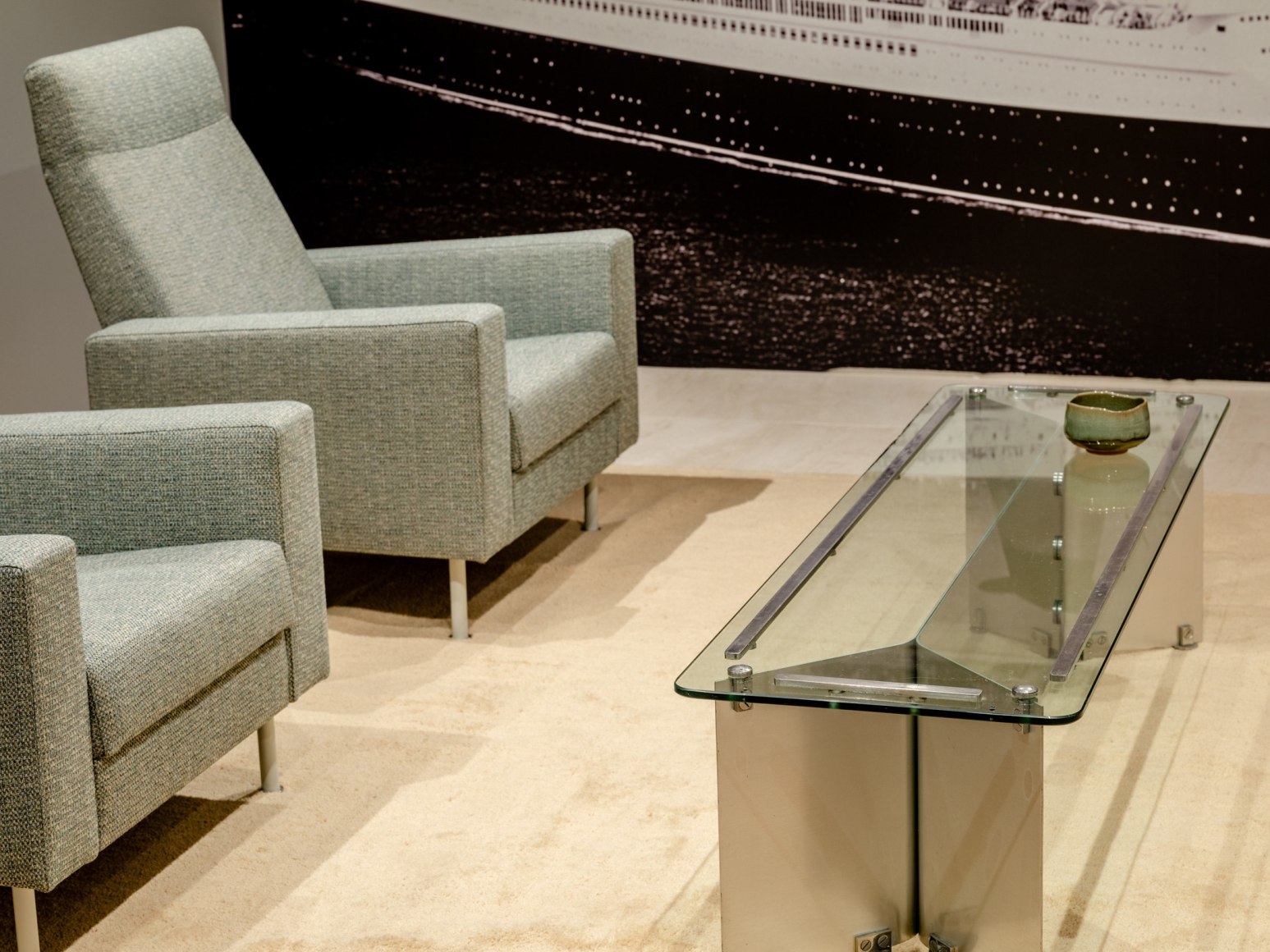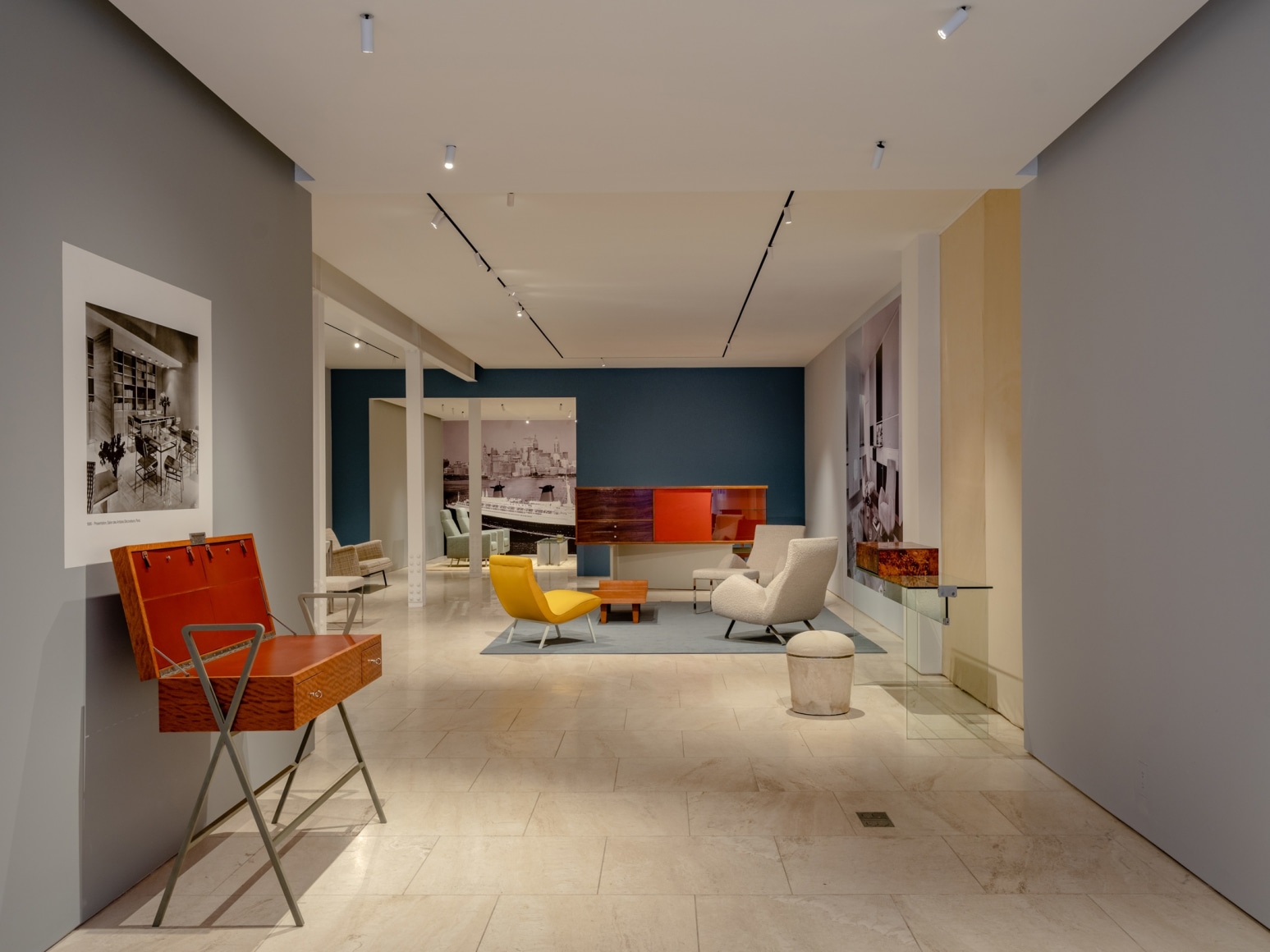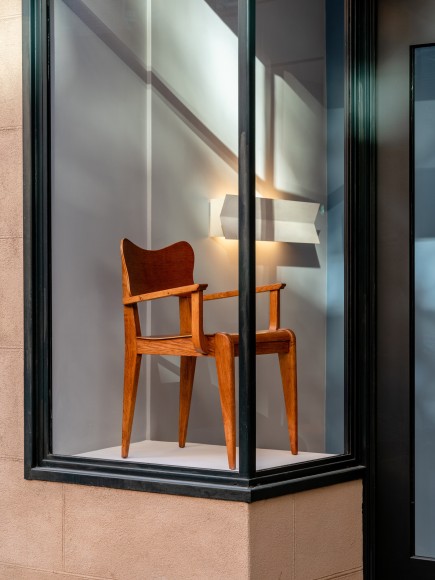Modernity as a mission
Jacques Dumond | Selected works 1938-1970
February 23 – April 8, 2023
This is the gallery’s first monographic exhibition on Jacques Dumond. For the past 15 years, Demisch Danant has been dedicated to researching, locating, and collecting Dumond’s work. We are pleased to finally be able to present an exhibition that is fully representative of the relevance of this 20th century French architect and designer.
Dumond’s furniture is rarely seen, as it was specifically designed for his architectural projects or for businesses such as banks, stores, and company offices. He also worked for public institutions and projects initiated by the French government, such as embassies, municipal theaters, ministries, town halls, Radio France’s Maison de la Radio headquarters, and the SS France ocean liner. All the models made for these projects were either one-off pieces or produced in very limited editions. Although Jacques Dumond greatly influenced the next generation of young French designers, who contributed to the industrialization and dissemination of mass-produced furniture in France, he himself produced very few models for retail.
His career crossed paths with a multitude of important figures in the history of French design during a time of major upheaval. Beginning with the UAM (Union des artistes modernes) of the 1940s to the Formes Utiles exhibitions at the beginning of the 1950s and the creation of the Industrial Aesthetic in 1952, to his numerous contributions to the Salon des Artistes Décorateurs (SAD) and international fairs such as the Milan Triennials and the World’s Fairs, Jacques Dumond was a key figure for nearly four decades. It was he who, through his active involvement in a range of areas, brought the worlds of industry and decorative arts closer together, thereby creating an impetus that would give rise to the concept of design in France.
His style, a particularly French form of classicism, simple and sober, is not immediately recognizable or identifiable, and consequently his furniture has often been overlooked by collectors and dealers, never arousing the level of interest it so deserves. Despite this, and the limited knowledge of his work, Jacques Dumond has long been esteemed and respected as a designer, both during his lifetime and today.
Our perseverance led us to pieces that we had long dreamed of discovering. Upon Dumond’s death in 1991, his Paris home and its decoration went up for sale. Luckily, a close family friend of Dumond’s preserved numerous works and a basement of his archives. In 2020, we were lucky to acquire armchairs that came from Dumond’s own apartment, that he first designed in 1959 for SAD and that had been used in his sitting room throughout his life. With this acquisition came a large part of Dumond’s archives, including thousands of photographs and prints, architectural drafts, and furniture drawings from nearly every project he worked on until the 1960s.
In 1961, Dumond designed, in conjunction with his former student, Philippe Leloup, the “Salon Saint-Tropez,” the largest public lounge aboard the SS France cruise liner, at the time an international symbol of French luxury. The furniture designed for the SS France is almost entirely untraceable. After a change of ownership and renovations, the ship’s furnishings were dispersed rather than simply destroyed. Around 30 years ago, some of the furnishings were sold near Le Havre (in Western France) and since then, works from the ship have only very occasionally appeared on the market. The aluminum-based, glass-topped table that we are showing appears to be one of the very few works to have survived from the SS France, as well as a rare pair of fully upholstered armchairs that was recently misattributed to Jacques Adnet during a sale. Fortunately, we recognized the work and were able to purchase them.
The armchairs designed for Maison de la Radio in 1962 no longer exist, and Dumond’s installation for the Foyer des Artistes was lost in a fire in the 1970s. However, we discovered that Dumond had a private residential commission during the same period as the Maison de la Radio commission and had produced six extra armchairs to be placed in the client’s apartment. A few years ago, the client’s children decided to sell their parents’ apartment and the furniture designed by Dumond. Thanks to an intermediary, we were lucky enough to get a hold of these chairs, as well as a wonderful sideboard in wood, Formica and powder-coated metal, and two pieces in glass.
Another rare piece in this exhibition is the large, double-faced, multi-purpose cabinet, Meuble Universel Double-Sided Cabinet with Secretary, designed for the SAD in 1952. Dumond’s stand at the SAD, in collaboration with his young assistant André Monpoix, was widely covered in the press and illustrated in several books on French design of the period. This extraordinary piece of furniture haunted us, but the likelihood of one day finding it was infinitesimal. Nonetheless, we did eventually acquire it, thanks to another Parisian dealer who had bought it in the 1990s at the beginning of his career, holding on to it all those years before deciding to sell it.
Rarity is not always synonymous with quality or importance, but in this case, all of the works described above are truly historic pieces – each of great importance in Dumond’s career, as well as demonstrating outstanding craftsmanship.
Dumond’s career began at the end of the 1930s and ended at the beginning of the 1970s; our exhibition principally represents his work from the 1950s and 1960s. We have structured the show in several sequences that represent the projects to which Dumond contributed and the resulting designs, selecting his most significant works.
The exhibition design is inspired by Dumond’s work as an architect and interior designer, as this was first and foremost what he was. Dumond was of the generation of interior decorators who drew and designed every element of a project, from the doorknob to the overall architecture of the space. The modernization and rationalization of living spaces, the use of light and color as well as new materials, the ingenious incorporation of storage spaces into architecture, all are important elements in his vocabulary. His formula “New materials + New technologies = New forms” was the motto of his mission and his vocation as a Modernist.
Installation Photography by Max Burkhalter

